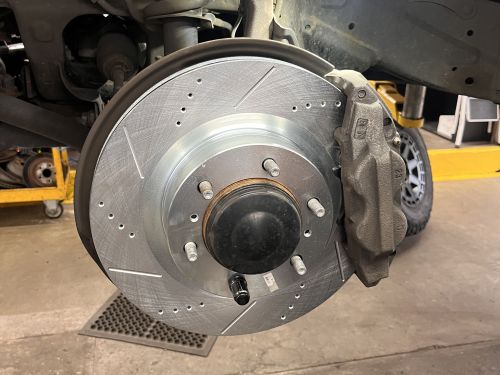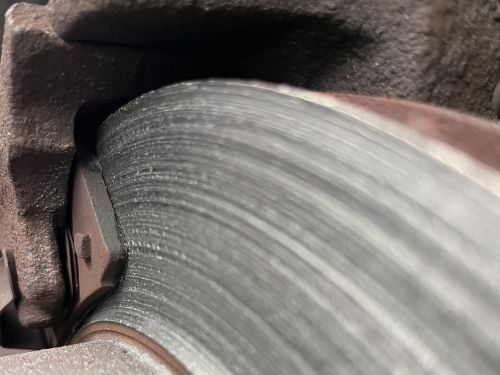When it comes to vehicle safety, few systems are as vital as the brakes. Whether you’re navigating city streets or driving on the highway, the brake system ensures your vehicle stops smoothly and efficiently. Understanding how the major components—brake pads, rotors, calipers, and ABS systems—work together can help you maintain your car’s performance and prevent costly brake repairs.

Call Springs Brake and Suspension Today!
We are Your Neighbor Recommended Auto Shop
Brake Pads: The Frontline of Friction
Brake pads are the most commonly replaced part of a braking system, and for good reason. These pads press against the rotors to create the friction that slows or stops your vehicle. Most modern cars use disc brakes, which rely on pads made from materials like semi-metallic, ceramic, or organic compounds.
Semi-metallic pads are durable and ideal for high-performance vehicles.
Ceramic pads offer quieter operation and less brake dust.
Organic pads provide smooth, gentle braking but wear out faster.
Over time, brake pads wear down and lose effectiveness. If you hear squealing, grinding, or feel vibration when braking, it’s time to have them inspected or replaced. Maintaining your brake pads ensures responsive braking and prolongs the life of your rotors.
Brake Rotors: The Foundation of Smooth Stopping
Brake rotors, also known as brake discs, are the round metal plates that rotate with your wheels. When you press the brake pedal, the pads clamp onto the rotors to generate friction.
There are different types of rotors, including:
Smooth rotors that are used for standard driving conditions.
Slotted or drilled rotors for better heat dissipation and performance driving.
Warped or worn rotors can cause vibrations, uneven stopping, and increased stopping distances. Regular brake inspections and proper maintenance keep your rotors in good shape, ensuring consistent braking power.
Brake Calipers: The Power Behind the Pads
Brake calipers house the pistons that press the brake pads against the rotors. When hydraulic pressure builds up in the brake lines, the calipers apply force, enabling the friction needed to stop the wheels. There are two main types of calipers:
Floating calipers, which move slightly to press the pads evenly on both sides of the rotor.
Fixed calipers, which have pistons on both sides for more balanced, high-performance braking.
If calipers stick or seize, they can cause uneven wear on brake pads or pull your car to one side during braking. Keeping your calipers properly lubricated and serviced ensures safe, balanced performance.
ABS Systems: Advanced Braking Technology
The Anti-lock Braking System (ABS) prevents your wheels from locking up during sudden or hard braking. By automatically pulsing the brakes multiple times per second, ABS helps maintain steering control and reduces stopping distances on slippery surfaces.
ABS systems consist of sensors, a control module, and hydraulic valves that work together to monitor wheel speed and adjust braking pressure instantly. Regular inspections ensure that the sensors and system function properly, especially before winter or wet driving seasons.
Why Choose Springs Brake and Suspension
At Springs Brake and Suspension, we specialize in comprehensive brake system services designed to keep your vehicle safe, reliable, and road-ready. Our experienced technicians inspect every component—from pads and rotors to calipers and ABS sensors—to ensure your brakes are performing at their best.
Your vehicle deserves the best care, and our commitment to safety and quality ensures every client leaves with confidence behind the wheel.
Keep Your Brakes Road-Ready with Springs Brake and Suspension
Your brake system is more than just a pedal—it’s a complex network of components working in harmony to protect you on the road. Understanding how brake pads, rotors, calipers, and ABS systems function helps you stay proactive about maintenance and ensures long-term reliability. When it’s time for inspection or repair, trust the professionals at Springs Brake and Suspension to deliver top-tier service and peace of mind.
Don’t wait until you hear grinding or feel vibration—schedule your brake inspection or service today with Springs Brake and Suspension. Let our experts help you stay safe, stop smoothly, and drive with confidence.

